Let’s Talk: Peer Pressure and Influence
 Our relationships with our peers impact each of us at every stage of life. As many youth in crisis have experienced, these relationships become doubly important when challenges arise at school or in the home. This is why it is good practice to keep tabs on the ways our relationships with our peers impact our decisions, our thinking and our emotions (whether positively or negatively).
Our relationships with our peers impact each of us at every stage of life. As many youth in crisis have experienced, these relationships become doubly important when challenges arise at school or in the home. This is why it is good practice to keep tabs on the ways our relationships with our peers impact our decisions, our thinking and our emotions (whether positively or negatively).
Our Let’s Talk: Runaway Prevention Curriculum helps youth explore important topics like these so they are prepared to address issues that arise in their day to day lives. Module 4: Peers and Healthy Relationships engages young people on the following subject areas:
- Peer pressure/peer influence and how to identify why we might give in
- Qualities of a good and healthy friendship or romantic relationship
- Cliques and the importance of inclusivity by participating in an activity
- Qualities of healthy, unhealthy, and abusive relationships
Throughout this module, young people contribute their knowledge and feelings on each of these subjects in group conversations and interactive activities under the guidance of an adult facilitator.
These activities engage youth in serious topics by allowing youth to connect with one another in a fun way. The Cliques and Crowds activity simulates the experience of being on the inside or outside of a clique and helps young people explore the feelings associated with both sides of the experience.
Similarly, the Peer Influences and Pressure activity shows how peer influences and pressure can affect young people in positive and negative ways. The activity asks the group to role play providing peer pressure to an individual to take a side on an action/issue.
The group then explores:
- What are some examples of peer pressure?
- Why we might give into peer pressure?
- What are some of the consequences of peer pressure?
- Where are some places or situations when peer pressure might occur?
Each of the activities in Module 4 provide young people with the tools they need to seek out and maintain relationships which are life-giving to them. Understanding peer pressure and healthy vs. unhealthy relationship patterns empowers young people by facilitating affirmative experiences with their peers. Youth who are vulnerable or have previously run away will benefit immensely for the implementation of this program in their communities.
Our 14 module Let’s Talk: Runaway Prevention Curriculum is free to use and build social-emotional skills that young people can utilize when issues arise in their day to day lives. Each of these modules is intended for use in after-school programs, programs for vulnerable youth and a variety of other youth-oriented spaces. Click here for more information and to download the curriculum.




